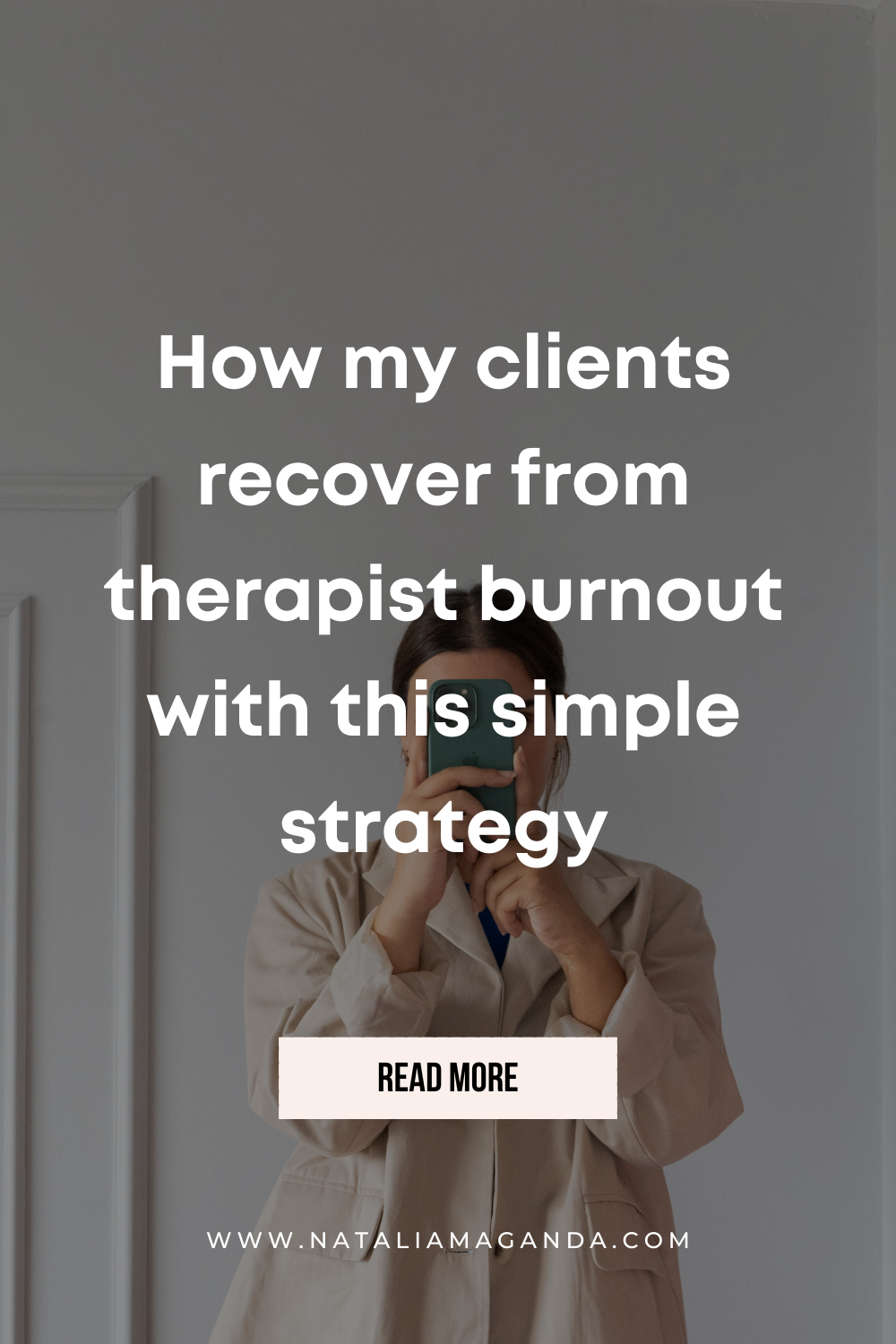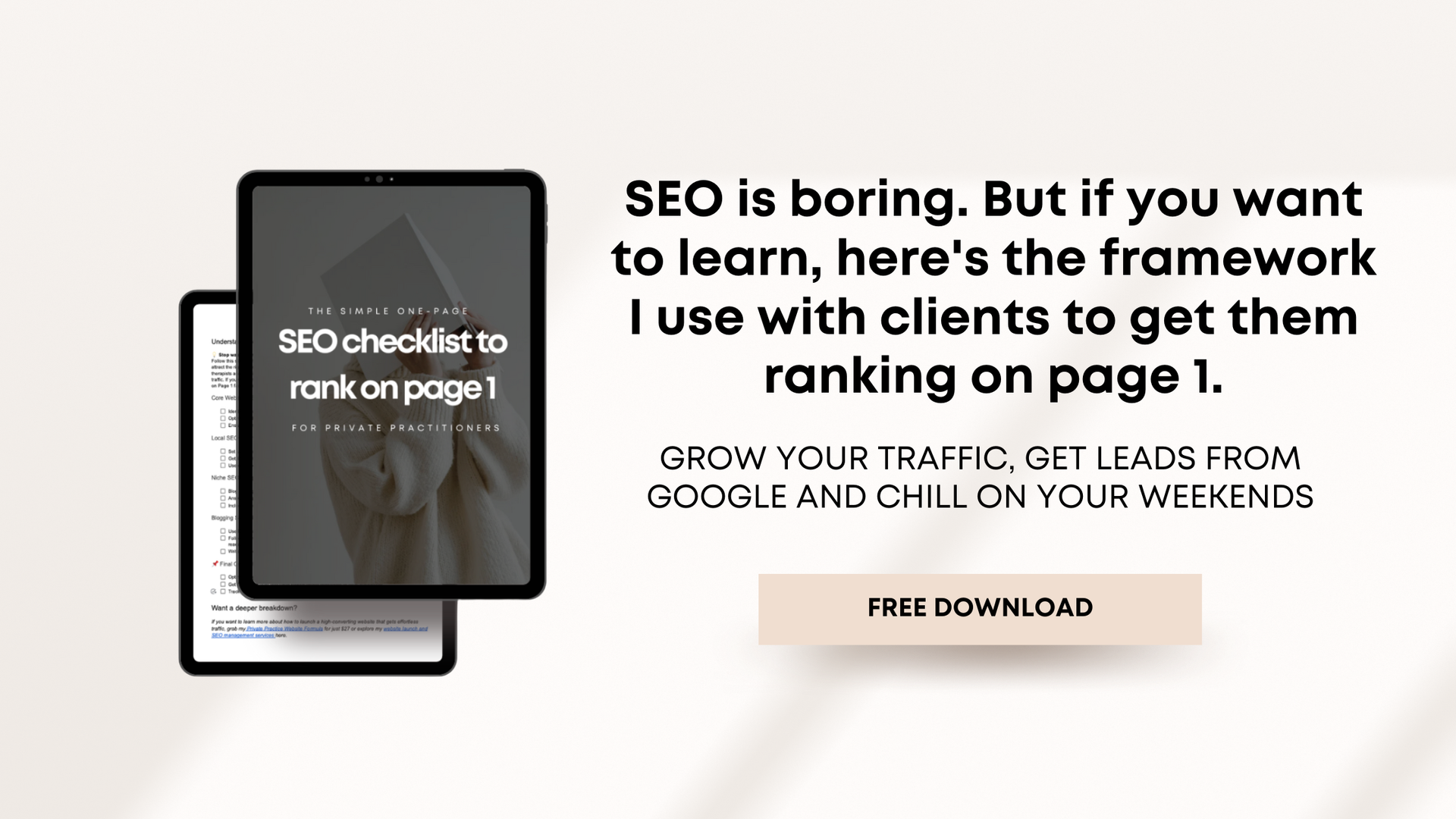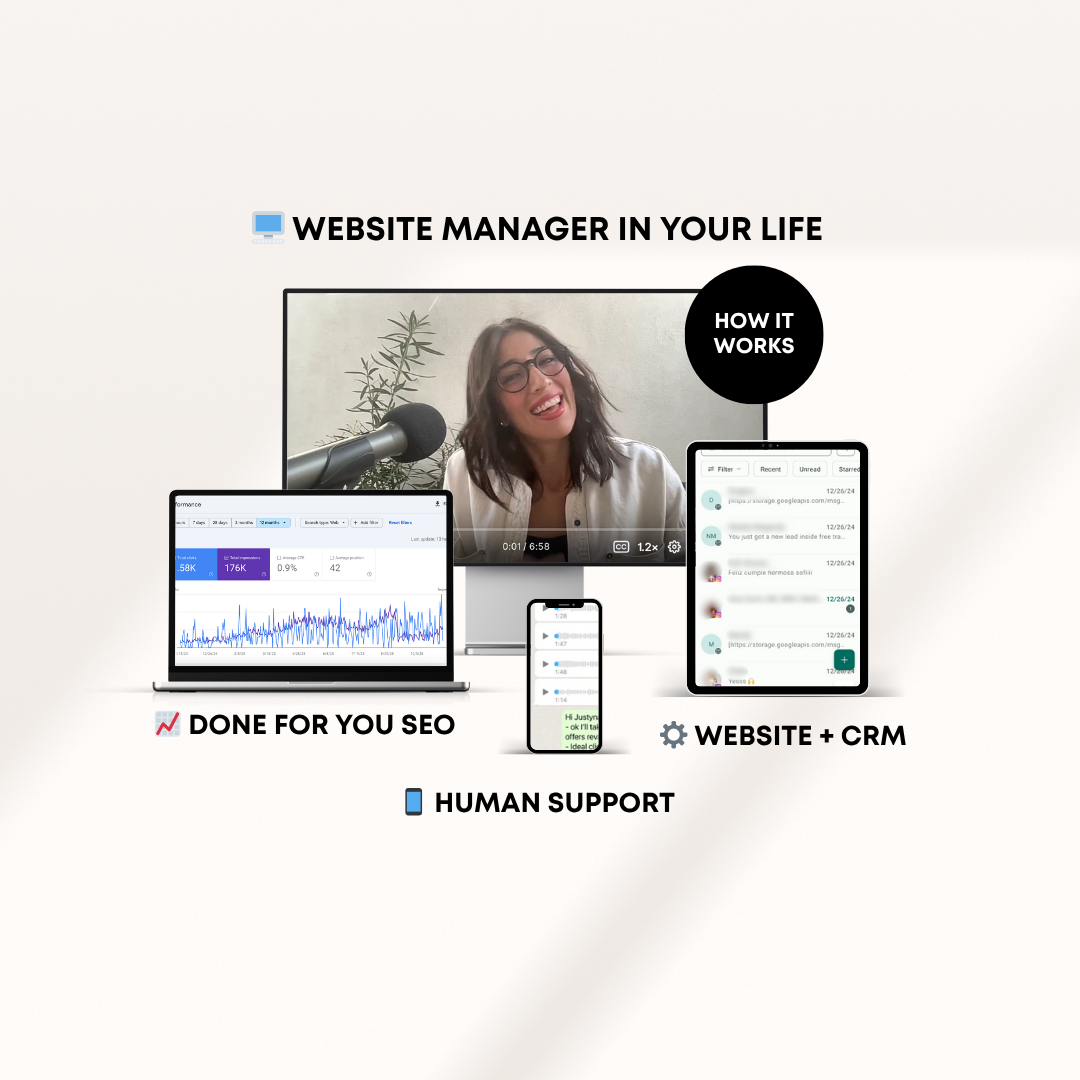How my clients recover from therapist burnout with this simple strategy
Therapist burnout is real. The emotional labor, the administrative load, the pressure to market your practice—it all adds up. Many therapists find themselves exhausted, overbooked, and unable to maintain a sustainable work-life balance. But what if you could grow your private practice without running yourself into the ground?
In case you’re new here, I’m Natalia Maganda, and I help private practice owners create and manage a strategic, client-attracting website—without the tech headaches. If you want a website that works for you while you focus on your clients, you’re in the right place. Learn more about my web design services for therapists.
What does therapist burnout feel like?
Burnout in therapy isn’t just feeling “tired.” It’s a deep exhaustion that makes it hard to show up fully for your clients. It can feel like:
- Emotional exhaustion, where you’re drained at the end of every session
- Feeling detached or unmotivated, even though you love what you do
- Anxiety about keeping up with marketing, admin work, and session prep
- Overworking to the point where you never have a real weekend off
If this sounds familiar, you’re not alone. Many therapists experience burnout from balancing client care with the demands of running a business.
What is the burnout rate for therapists?
Therapist burnout is more common than you think. According to research from the American Psychological Association (APA) (source), nearly 50% of mental health professionals report moderate to high levels of burnout. The main contributors include:
- Emotional fatigue from holding space for clients all day
- Overbooked schedules due to insurance panel demands
- Admin overload—handling inquiries, scheduling, and documentation on top of sessions
- The pressure to market a private practice without a clear strategy
The good news? Burnout isn’t inevitable. The key is removing the tasks that drain you—so you can focus on what you do best.
How to prevent burnout as a therapist
Setting boundaries in your practice
Many therapists overbook themselves out of financial necessity or fear of not filling their caseload. But setting firm boundaries is essential for longevity. That includes:
- Limiting your client load to a manageable number
- Scheduling admin-free days so you’re not constantly in “work mode”
- Knowing when to refer out instead of taking on clients who don’t fit your expertise
Reducing admin overload
One of the biggest contributors to therapist burnout? Spending hours on marketing, website updates, and administrative work instead of client care. Many therapists assume they have to DIY everything—until they realize outsourcing can actually save them time, energy, and money.
How my clients recover from therapist burnout by outsourcing website & SEO
Many therapists think burnout recovery is about self-care. And while taking breaks is essential, real burnout recovery happens when you remove unnecessary stressors from your workload.
The fastest way my clients regain balance? They stop trying to do everything themselves and start outsourcing their website management and SEO. Here’s how:
Step 1 – Launch a high-converting website that works for you
Many therapists spend weeks (or months) trying to build a website on their own—only to end up with something that doesn’t attract the right clients. Instead, my clients get a done-for-you website that is designed to convert. This means:
- SEO-friendly pages that help clients find them on Google
- Clear, conversion-focused copy so visitors instantly know they’re in the right place
- Automated lead capture—so they never lose potential clients due to slow responses
A high-converting website removes the need for constant marketing hustle, so you can take a step back from social media and still book clients effortlessly.
Step 2 – Automate lead generation & client attraction
My clients don’t just get a website—they get an all-in-one tech stack that streamlines their marketing. This means:
- Automated scheduling, so no more back-and-forth emails
- Lead tracking systems, so they always know where inquiries come from
- Built-in email automation, so they can nurture leads without manual follow-ups
When you automate your lead generation, you free up hours every week—giving you more time to rest, recharge, or focus on your clients.
Step 3 – Get done-for-you SEO that grows your traffic every year
Instead of constantly worrying about where their next client is coming from, my clients rely on strategic SEO to bring in steady inquiries.
- Local SEO ensures they show up in searches like “trauma therapy in [city]”
- Niche SEO attracts ideal clients searching for their exact specialty
- Yearly traffic growth means they can scale without increasing their workload
Unlike social media marketing, SEO works for you 24/7—without burnout.
Step 4 – Choose the marketing activities you actually enjoy
Because their website, lead generation, and SEO are fully taken care of, my clients finally have the freedom to market their practice in ways that feel good. Instead of feeling pressured to post constantly, they can:
- Write blog posts when they’re feeling inspired (not because they have to)
- Focus on in-person networking instead of social media stress
- Actually take weekends off, knowing their website is working behind the scenes
When you remove the stress of managing your website, marketing, and SEO, you gain the freedom to run your practice on your own terms.
Final thoughts on therapist burnout recovery
Burnout isn’t just about working too much—it’s about spending time on the wrong things. If you’re overwhelmed by website updates, marketing, and client admin, outsourcing these tasks can give you back your time, energy, and weekends.
Want a website that actually works for you—so you don’t have to stress about lead generation?
Let’s build a site that grows your practice (without burnout).
Related reads therapist marketing:
- The best therapist website template structure I recommend to all my clients
- The stress-free guide to becoming an entrepreneur in healthcare
- How to write a thoughtful therapy termination letter
- Private pay vs insurance: pros and cons for therapists
- The best accounting software for therapists
- The guide to managing your money and private practice therapy expenses

* AI Disclosure: This content may contain sections generated with AI with the purpose of providing you with condensed helpful and relevant content, however all personal opinions are 100% human made as well as the blog post structure, outline and key takeaways.
* Affiliate Disclosure: Some of the links on www.nataliamaganda.com may contain affiliate links meaning that I will get a commission for recommending products at no extra cost to you.

hello! i'm natalia
Latina, web design expert for mental health professionals.
I help ambitious life coaches, therapists and holistic leaders amplify their magic, gain visibility, and simplify their marketing efforts through strategic web design and content.
If you’re looking for an all-in-one system to manage your website, emails, funnels, and CRM, Go HighLevel (affiliate link) is the most powerful tool I’ve tested—and it’s built to grow with you.
On a tighter budget or just starting out? ThriveCart (affiliate link) offers a one-time payment option and easy checkout setups that still pack a punch for digital offers and automation. (Send me an email after your purchase and make sure to use my affiliate link)






